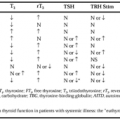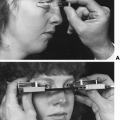SIGNS AND SYMPTOMS OF HYPOCALCEMIA
Ionized calcium, rather than total calcium, is the primary determinant of symptoms in patients with hypocalcemia. A low extracellular fluid ionized calcium concentration enhances neuromuscular excitability, an effect that is potentiated by hyperkalemia and hypomagnesemia.
Substantial variation is seen among patients in the severity of symptoms. Those with chronic hypocalcemia sometimes have few, if any, symptoms of neuromuscular irritability despite quite low total serum calcium concentrations. Patients with acute hypocalcemia often do have symptoms, although no absolute level of serum calcium exists at which symptoms predictably occur. Most patients have at least mild symptoms of circumoral numbness, paresthesias of the distal extremities, ormuscle cramping. Symptoms of fatigue, hyperirritability, anxiety, and depression are common. Severe manifestations of hypocalcemia include carpopedal spasm, laryngospasm, and focal or sometimes life-threatening generalized seizures (which must be distinguished from the generalized tonic muscle contractions that occur in severe tetany).
Clinical signs of the neuromuscular irritability associated with latent tetany include Chvostek sign and Trousseau sign. Chvostek sign is elicited by tapping the facial nerve just anterior to the ear to produce ipsilateral contraction of the facial muscles. Slightly positive reactions occur in 10% to 30% of normal adults4; thus, this sign cannot be considered diagnostic of hypocalcemia unless one knows that it previously was absent. Trousseau sign is present if carpal spasm is induced by pressure ischemia of nerves in the upper arm during the inflation of a sphygmomanometer above systolic blood pressure for 3 to 5 minutes.5 Both of these signs can be absent even in patients with definite hypocalcemia.
Hypocalcemia is also associated with nonspecific electroencephalographic changes, increases in intracranial pressure, and papilledema. Prolongation of the corrected QT interval on the electrocardiogram is a useful sign of significant hypocalcemia (Fig. 60-2), but other causes of QT prolongation exist. Cardiac dysfunction that reversed with treatment of the hypocalcemia has been reported. This may range from subclinical impairment of cardiac performance that is noted only with exercise6 to life-threatening cardiac failure.7,8 The somatosensory-evoked potential recovery period may be a tool for assessing the effects of and recovery from hypocalcemia.9
Stay updated, free articles. Join our Telegram channel

Full access? Get Clinical Tree





